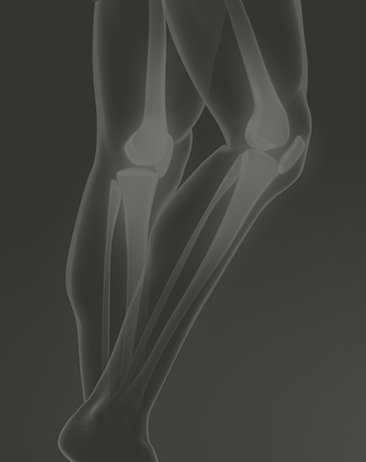Torn Meniscus Treatment in Santa Rosa
Meniscus Repair
Redwood Orthopaedic Surgery Associates in Santa Rosa CA provides a full scope of orthopaedic services of the knee including:
Our group, of board certified experts, utilizes the most current and proven diagnostic techniques and treatment modalities to deliver the best care to our patients.
What is a Meniscus Tear?
A meniscus tear is common after a traumatic injury, and most frequently occurs when the knee joint is bent and the knee is then twisted. Torn menisci are common in athletes and older adults whose cartilage may have worn away.
Patellar Instability
The kneecap (patella) connects the muscles in the thigh to the shinbone. In a healthy knee, the patella rests in a groove in the thighbone and slides up and down as you bend and straighten your leg. Patellar instability, or unstable kneecap, occurs when the patella slips wholly or partially out of the groove. This may occur after an injury or because the groove itself is too shallow or uneven.
Treatment For Patellar Instability
Treatment typically involves physical therapy for strengthening. Surgical reconstruction is used to correct recurrent instability. If your patella dislocates, you may experience one or more of the following: difficulty with walking, pain, swelling, stiffness, or abnormal motion of the knee cap.
What Happens If Patellar Dislocation Is Left Untreated?
If left untreated, patellar dislocation can lead to arthritis, knee instability and chronic knee pain.
PCL (Posterior Cruciate Ligament)
The posterior cruciate ligament (PCL) is one of four ligaments that helps support the knee and protects the shin bone (tibia) from sliding too far backwards. While injuries to the anterior cruciate ligament are much more common, PCL injuries can account for up to 20% of knee injuries.
Causes Of PCL Injuries
Injury to the PCL most commonly occurs when the knee is bent and an object strikes the shin, pushing it backwards. This injury often happens during car accidents, falls, or sports activities when the shin is forcefully pushed against a solid object.
PCL Tear Symptoms
Patients with PCL tears may experience pain, swelling and limited range of motion within the knee. Some may also experience a feeling that the knee has popped or given out, as it causes instability within the joint. While many symptoms of this injury can be relieved, instability of the joint often persists and may require more aggressive treatment.
Treatment For PCL Injuries
If surgical reconstruction is pursued, the technique is similar to the one used for ACL reconstruction.
What Is Knee Arthroscopy?
Knee arthroscopy can be used as either a diagnostic tool or a treatment tool. It utilizes a device called an arthroscope, which is a fiber-optic telescope that is incredibly small and can be inserted into the joints of the body. In knee arthroscopy, this device is used with a camera attached that allows the doctor to view the inner workings of the knee joint to diagnose or treat certain conditions that involve parts of the knee such as the femur, patella, tibia, and articular cartilage.
Do I Need To Stay at the Hospital Overnight for Knee Arthroscopy?
If knee arthroscopy is used for the diagnosis of a knee condition, patients return home the same day. However, when used for surgery, such as the treatment of knee-cap disorders, an overnight stay at the hospital might be required as these often result in significant swelling that needs to be monitored.
Can Damage to the Knee Be Reversed With Knee Arthroscopy Surgery?
Patients with conditions impacting the knee joint and the surrounding ligaments and muscles can often use knee arthroscopy to diagnose their condition and effectively treat it. Damage and injury to the knee often require patients to consider knee arthroscopy as a more conservative treatment option than more invasive surgeries.
What Can I Expect After Knee Arthroscopy?
After your knee arthroscopy, you will awaken in a recovery room and return to your room. A bandage is placed around the knee, and an IV may be removed when you are coherent from your anesthesia. Our team will provide discharge and post-operative instructions for you to follow so you can recover quickly from your procedure. You may be cleared to take over-the-counter or prescription pain medication to manage discomfort and can often remove the bandaging the following day. You should be aware that swelling is completely normal and will subside on its own but can be managed by elevating the leg and using ice packs in 20-minute rounds several times a day.
How Do I Know if I Need Knee Arthroscopy?
If you have experienced an injury to the knee or are experiencing problems that require further evaluation, you may be told by the doctors at Redwood Orthopaedic Surgery Associates that you may benefit from knee arthroscopy, either to diagnose a condition or treat one. Our providers find it imperative to only perform procedures that are necessary and as conservative as possible.
Is Knee Arthroscopy Safe?
As with any medical and surgical procedure, there are some risks that can occur, especially risks related to the general anesthetic used. The most common side effects and risks with knee arthroscopy include the following:
- Stiffness of the knee joint
- Numbness near the incisions
- Injury to the nerves or blood vessels
- Post-operative bleeding
- DVT (Deep Vein Thrombosis)
- Progression of the disease
When you consult with your provider at Redwood Orthopaedic Surgery Associates, you can learn more about what you can expect after the procedure and when to contact a doctor for further assistance if signs of infection or other complications arise.


